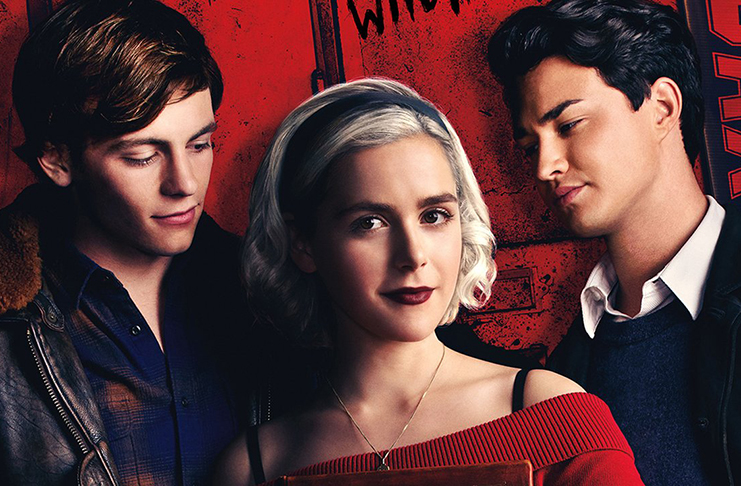
I HAVE come to believe that “Chilling Adventures of Sabrina” truly might be the show that is most expressive of everything that is of value to the current generation of young people. The show fully represents the continuous rise of feminism and powerful women in a misogynistic world. It rebels against long-accepted notions of religion and tradition (both in form and content), and it perfectly captures the angst, fear, sense of helplessness and of hope, resilience, and a dedication towards diversity and acceptance (particularly of communities traditionally marginalised) that have also come to stand as tenets that are exemplified by the young people of the world today. For these reasons, I believe the Netflix show is one of the best on television (or your phone, or your computer, or wherever else you use to stream shows), particularly because of the way it managed to elude the ‘second season’ curse, where the first season remains markedly superior, a phenomenon that has affected other shows, such as “Riverdale” and “13 Reasons Why,” which cater to the same demographic. The second season of “Chilling Adventures of Sabrina” is better, increasing the suspense, the stakes, and all of the campy horror elements that made the first season so well-received by audiences.
The story continues where the first season left off, with Sabrina, the half-mortal, half-witch teenager struggling to juggle both the elements of light and darkness that have converged in her life. There are new demons to battle, of course, but the biggest adversary that Sabrina goes up against is the patriarchy. She rebels early on by attempting to derail Father Blackwood’s attempts to promote certain traditions of the Academy of Unseen Arts that are steeped in misogyny.
This later escalates with Blackwood asserting that witches are meant to be followers and servants of warlocks, which, naturally, rubs Sabrina the wrong way and sets the stage for the undoing of everything Blackwood is trying to set in place. The feminist fight that this particular story arc brings to us is relevant to the world of today, especially considering that this age coincides with the rise of Fourth Wave Feminism. Sabrina’s own battles with patriarchy are indicative of the severity and widespread-nature of patriarchal norms and traditions in society.
The fact that a bright, enterprising, and powerful witch such as Sabrina can be belittled and cast aside on account of her sex indicates that, unfortunately, no woman is exempt from the tentacles of misogyny, not even the strong. This idea is reinforced when we see other powerful female characters being treated in a similar manner in the show: Zelda Spellman being forced to walk behind Father Blackwood because it’s a tradition for wives to walk behind their husbands, Hilda Spellman being sexually propositioned in exchange for a favour from the leader of the Witches’ Counsel, and Lilith who is used, lied to, denied what is rightfully hers, and abandoned by Lucifer. All of these characters struggle with sexism, but the shows angle is not merely to represent women who are hurt and mistreated, but to highlight empowered women who are strong, brave, cunning, and exacting.
Sabrina bests Father Blackwood and the devil, Zelda is freed from her curse and takes her place in the fight, Hilda murders the man who propositioned her, and Lilith finally gets everything she deserves by the end of the season – and all of this happens in ways that are entertaining, emotional, celebratory, and just. The moral here quite obviously is that women are strong enough to survive, to succeed, to kill, to lead, and to make it out of anything that the patriarchy wants to throw at them, and that is everything that the young, sane, show-watching audience of 2019 needs in a television show.
Patriarchal norms and traditions are not the only staples of society that are addressed by “Chilling Adventures of Sabrina,” however. There are elements of religion that are represented in ways that are contrary to what we have been traditionally seen in the media. I mean, the fact that our heroine and protagonist is a witch who has basically given her soul to the devil should be enough for people to understand the somewhat ambivalent feelings about religion that the show gives off, but there’s more. Angels, in the guise of demon-hunters, are presented as bloodthirsty villains, while witches are represented as being capable of goodness, such as curing one of blindness or helping friends to succeed in athletics. It is a re-presentation of a lot of what we have regarded to be true and accepted over the years.
This reaching out to and remodeling of old traditional forms is meant to be observed as a mirror with which the complete remodelling of the world in the modern era is meant to be shown – a variety of significant changes brought on through the rise of the newer generations that are going to elevate the world from a dismal place of darkness and antiquity into a place of acceptance with less draconian laws and regulation, and all of this in a show steeped in magic and fantasy, makes it even more thrilling and it also makes us hopeful seeing current ideas, such as the concept of transitioning with regards to transgender people, staunch female empowerment, and a world without religious hypocrisy all being packaged and made available for the young people who are bringing about and will continue to bring about these very same changes in the world.


.jpg)











